 Be Inspired Blog - Arizona
Be Inspired Blog - Arizona

How to Use Light and Water Meters
A light meter is a must-have tool in your houseplant care arsenal. Measuring the light that plants are exposed to throughout the day and through the changing seasons is an incredibly useful insight to have. Plants, more than anything, need the right amount of light in order to thrive. Read on for more on the benefits and tips for using a light meter.
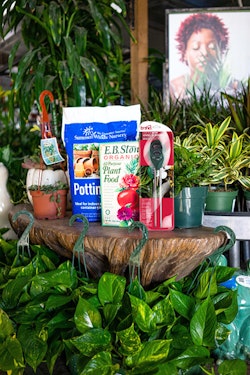
What is a Light Meter?
A light meter is a tool that measures specific elements your plant is exposed to: namely, light and soil conditions. Here at SummerWinds, we recommend the Bond 3-Way Soil Meter. It measures the light, moisture, and pH level of your plant’s soil all in one product. A light meter is an extremely helpful tool to help your plants live their best life.
The Benefits of Measuring Light
Our goal as houseplant enthusiasts is to try to recreate the plant’s ideal natural habitat as closely as possible. Light is always changing. As seasons change, we tilt closer or further from the sun, which changes the length of our days and the intensity of light we, and our plants, receive. Using a light meter gives us a deeper understanding of what our plants need. It takes some of the guesswork out of plant care.
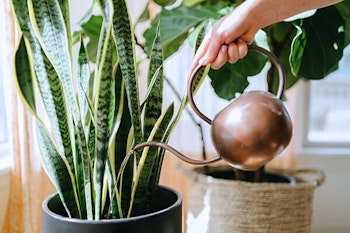
What About Measuring Soil Moisture?
While there are many signs that your plant needs more water, measuring the moisture level of your houseplant’s soil with a meter can be beneficial. When inserted into a plant’s soil near the root ball, it can detect the conductivity of your soil. Moisture is one element of conductivity. When you do regular moisture readings, try to always read from around the same point in the soil for consistency. If your moisture reading says the plant is a bit dry, don’t panic. It’s important to let most plants dry out a bit between waterings to reduce the risk of root rot.
Light vs. Moisture
When you think of plant care, you may immediately think of the importance of water. And while it’s true that plants need water to grow, light is the source of plant life above all else. You can be on top of your game when it comes to watering your plants, but without proper light, you will end up with a soggy and rotten plant. Plants cannot grow properly without the right light, so consider putting a light meter at the top of your shopping list.
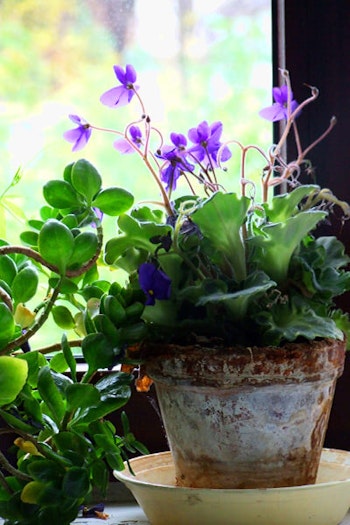
How to Effectively Use a Light Meter
While facing the light source, turn the light meter on and hold it close to the plant. You don’t need the probes to touch any element of the plant, just be in close proximity to it. You should get a number reading right away. Cross-check the number to the handy chart on the back of the light meter package. If you used the light meter to measure soil moisture or pH, make sure you wipe the probes between uses.
Understanding Light Meter Readings
The best practice for light meter readings is to try taking readings over the course of an entire day so you have an idea of the light your plant is exposed to throughout the day. Do this at least once every season. When comparing the light meter reading to a plant need chart, the chart number represents the minimum light needs of the plant for at least 16 hours a day.
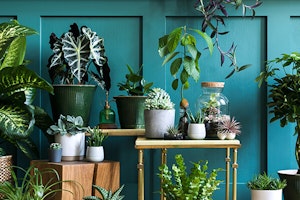
How Much Light Does my Plant Need?
The Bond 3-Way Light Meter features a handy Moisture and Light Readings Chart on the back of the package, with a list of houseplants that likely covers your own collection. When you do a light reading, you can cross-check this chart to make sure your lighting lines up with each plant’s needs.
Succulents, Cacti, Croton, Crassula, Zebra Plant, Azalea
When measuring the light needs of these plants, your meter should read between 500 - 2000. These plants love a good amount of bright direct or indirect light. Learn the signs for these plants lacking the light they need and bump them closer to a window or stronger light source if needed. A light-deprived croton’s neon colors will fade and the plant will gradually turn a dull shade of green. Succulents and cacti, including crassula, will react to poor lighting by stretching toward the light source, giving them a weak, “leggy” look, while the zebra plant’s deep green color will fade. Meanwhile, azaleas that are starved for sunlight will not bloom; they may produce buds that never open.
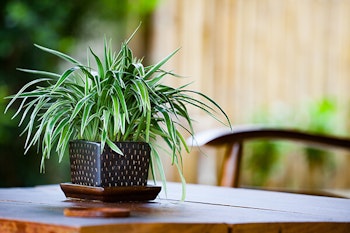
Begonia, Dieffenbachia, Dracaena, Nepthytis, Palms, Peperomia, Philodendron, Snake Plant, Rubber Plant, Spider Plant, Pothos, Fiddle Leaf
These plants love a mid-range of light. Check for a light reading between 100-1000. You may notice that these plants do well in a wide variety of locations. But be sure to check them regularly, as seasonal changes may affect them. If you notice a plant slowing down its growth or losing its usual vibrant colors, it may be a sign that it needs a bit more light.
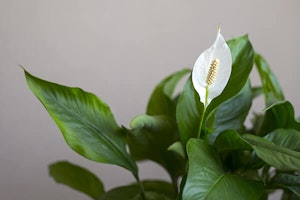
Bromeliad, Chinese Evergreens, Peace Lily
These plants represent our low-light-loving friends. They are the easiest plants to place in our homes because they can thrive with very little light. But, don’t forget, they still need some light! Keep them in ranges between 50-500 for best results. These plants should be watched closely to ensure they don’t get scorched from overexposure to the sun’s rays.
Adjusting Plants for Light Needs
If your light meter reading doesn’t line up with your plant’s needs, or you suspect that your plant is struggling due to light issues, there are a few options to help remedy that. You can move your plant closer to a light source, further away from the light source, or you can try moving your houseplant to a different light source altogether. Sometimes, the direction of light can be too weak or too strong. For example, north-facing windows won’t get nearly as much light as east or south-facing windows. The intensity of light will also be different. Try different readings in different locations in your home and at different times of day, and different times of the year. Moving plants around your home or office throughout the year is a great idea.
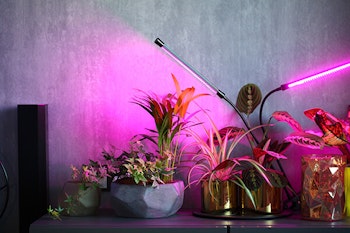
Supplementing Light
Sometimes, we really want a plant that may not thrive in the light conditions we can naturally provide it, or, we went a little overboard at the plant store and bought something trendy and on impulse without much thought. Don’t worry, it happens to the best of us. There are ways to supplement your lighting arrangements. Grow lights are a great shortcut to helping your plants get the light that they need so they can thrive. This can be especially helpful during the winter months where we may not get as many full days of light. Do a little research to make sure your grow light can match the needs of the specific houseplants you want to give additional light.
We hope these tips have been enlightening. Remember that light and water are the keys to a lush thriving houseplant collection. If you’re looking to buy light meters in the Valley, come visit us! We’d love to help you find all the tools you need to take good care of your houseplants.

